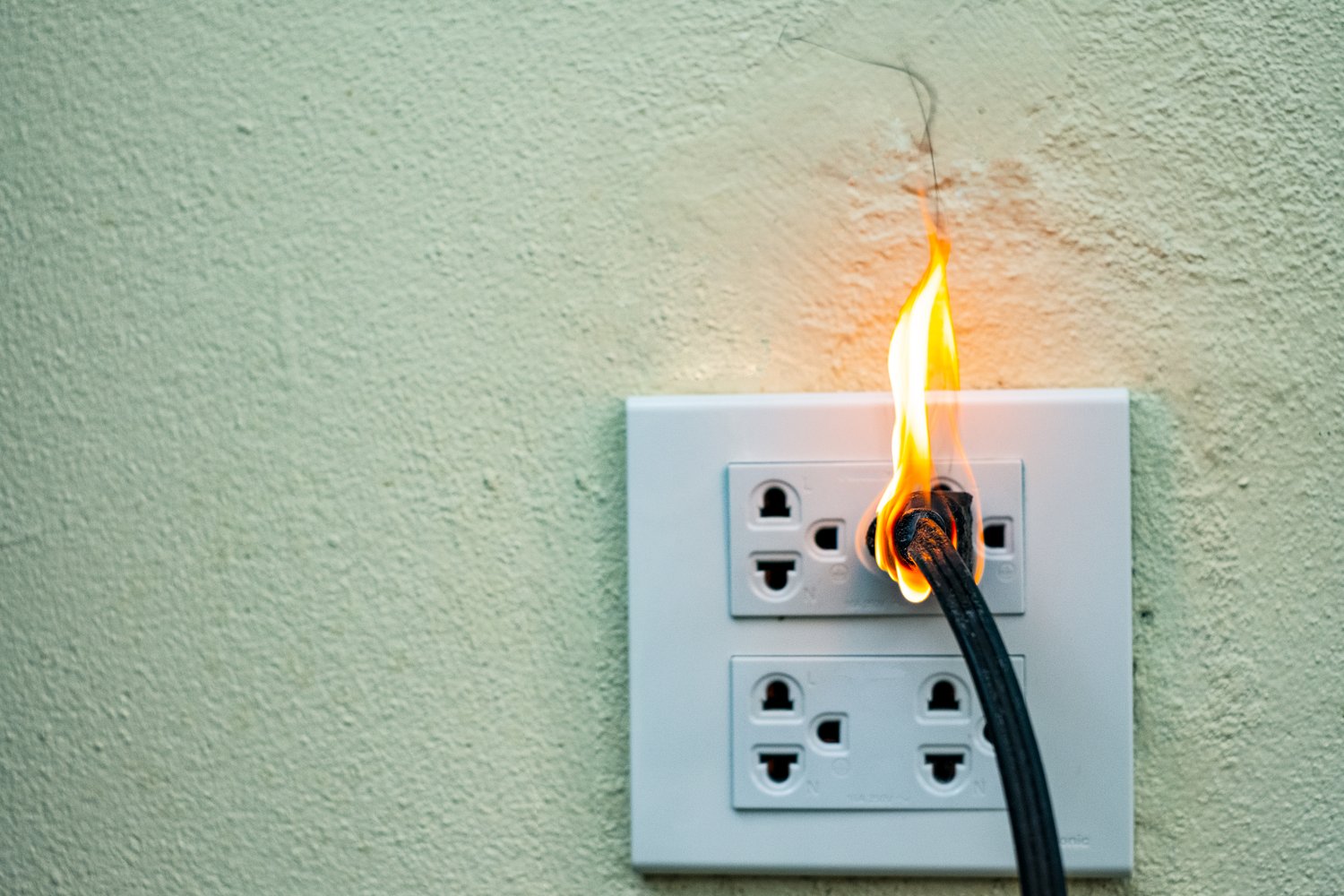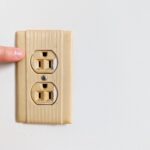Experiencing a spark from an electric outlet at home can be alarming, raising immediate safety concerns and potential risks. Electrical issues, such as sparking outlets, are more than just a minor inconvenience; they can pose serious hazards, including electrical fires. Understanding the causes, knowing the emergency steps to take, and implementing preventative safety measures are crucial for every homeowner. This article delves into the nuances of handling such situations, ensuring both safety and peace of mind.
- Understand the common causes of outlet sparking, from outdated wiring to overloaded circuits, and the inherent risks they present.
- Learn immediate actions to take when you witness an outlet sparking to mitigate further risks and safeguard your home.
- Recognize when it’s essential to call a certified electrician, ensuring all repairs comply with safety standards and electrical codes.
- Discover effective preventative measures to reduce the likelihood of future electrical hazards, maintaining a safe living environment.
By exploring this article, you’ll gain valuable insights into addressing sparking outlets effectively and safely. Whether you’re a homeowner keen on maintaining a secure household or simply curious about electrical safety, these guidelines will prove indispensable. Engage with the content, and empower yourself with the knowledge needed to act decisively in the face of electrical issues.
Understanding Electric Outlet Sparking: Causes and Risks
Electric outlet sparking is a common issue that homeowners might face. It can occur for various reasons, and it’s important to understand these causes to effectively manage potential hazards.
A frequent cause is overloaded circuits. When too many appliances are plugged into an outlet, it can lead to an excessive electrical load, causing sparks. Worn-out outlets can also contribute to sparking. Over time, the internal components of an outlet may deteriorate, leading to poor connections and sparking.
Loose wiring is another culprit. Improperly connected wires behind an outlet can create sparks due to unstable electrical flow. Additionally, water exposure near outlets, often in kitchens and bathrooms, can lead to dangerous sparking and should be addressed immediately.
The risks associated with electric outlet sparking are significant. Sparks can easily turn into electrical fires, posing a severe risk to your home and family. Moreover, sparks can contribute to damage to appliances, causing them to malfunction or become entirely inoperable.
By understanding these causes and risks, you can proactively ensure your home’s electrical system remains safe and efficient. Awareness can not only protect your appliances but also significantly reduce the risk of fire.
Immediate Steps to Take When Encountering Sparking Outlets
Spotting an outlet spark can be alarming, but knowing the right steps to take can prevent further damage and ensure your safety.
First, immediately shut off the power to the outlet. Locate your home’s main electrical panel and switch off the circuit breaker corresponding to the sparking outlet. This prevents electricity flow and reduces the risk of fire.
After turning off the power, conduct a visual inspection of the outlet for any signs of damage like burns or melting. Avoid touching the outlet with your bare hands. Instead, use a flashlight to safely observe any visible issues.
It’s crucial to avoid using the affected outlet until it has been thoroughly inspected and repaired by a professional. Do not attempt a DIY fix unless you are knowledgeable and experienced in electrical repairs, as this can be dangerous.
Taking these immediate actions can significantly mitigate the risks associated with sparking outlets. Ensuring swift power shutdown and visual inspection can protect both your home and your loved ones from potential hazards.
Investigating Electric Outlet Sparking: When to Seek Professional Help
Experiencing a sparking electrical outlet can be alarming. Knowing when to seek professional help is crucial to prevent potential hazards. Although minor issues might seem manageable, opting for a certified electrician ensures the safety and reliability of your home’s electrical systems.
If you notice persistent sparking, discoloration around the outlet, or unexplained burning smells, it’s a clear signal to contact a certified electrician. These symptoms could indicate underlying problems such as faulty wiring or overloaded circuits, which require expert investigation.
Professional electricians have the expertise to identify the root causes and provide adequate repairs while maintaining compliance with local electrical codes. Allowing a professional to address these issues not only ensures safer living conditions but also safeguards your home from future electrical fires or appliance damage.
Additionally, if you lack the necessary skills or equipment to safely inspect or repair electrical components, it is best to leave these tasks to qualified professionals. Investing in expert services not only protects your property but ultimately provides peace of mind.
Implementing Safety Measures to Prevent Future Electrical Hazards
Preventing electrical hazards should be a priority for any homeowner. By implementing simple yet effective safety measures, you can minimize the risk of encountering dangerous electrical problems in the future.
Regularly inspecting your electrical outlets and wiring can reveal early signs of wear and tear. Replace damaged or worn-out components immediately to prevent sparking or potential shock hazards. Additionally, avoid overloading outlets with too many devices, as this can increase the risk of overheating.
Installing ground fault circuit interrupters (GFCIs) is another proactive measure. These devices quickly cut off power to prevent electrical shock, especially in moisture-prone areas like bathrooms and kitchens.
Furthermore, consider investing in high-quality surge protectors to safeguard your appliances from electrical surges. Regularly checking and maintaining your home’s electrical system through professional inspections can also keep potential issues at bay.
By adopting these preventative practices, you’re effectively reducing the likelihood of serious electrical mishaps, securing a safer living environment for your household.
Choosing the Right Equipment and Tools to Address Electric Outlet Sparking
When faced with the unsettling scenario of a sparking electric outlet, selecting the right equipment and tools is crucial for safety and effective troubleshooting. Properly diagnosing and fixing these electrical issues not only enhances your home’s safety but also ensures compliance with safety standards.
Firstly, investing in a voltage tester is essential. This device allows you to verify if the power is still running to the outlet after you’ve turned off the circuit breaker, preventing accidental electrical shocks. A voltage tester is a must-have tool for any homeowner dealing with electrical systems.
Another important piece of equipment is a screwdriver set. Choose a set with insulated handles to prevent electrical conductance while you’re removing outlet covers or dealing with wiring. Insulated screwdrivers provide an added layer of protection against unexpected surges or sparks.
Additionally, a multimeter can be invaluable for diagnosing outlet issues. This tool measures voltage, current, and resistance, helping you identify potentially weak circuits and ensuring that everything is operating as it should. Regular use of a multimeter can also help in detecting any malfunction in the outlet’s wiring.
If you are considering replacing a sparking outlet, opt for tamper-resistant electrical outlets. These are designed to improve safety by preventing foreign objects from being inserted into the outlet slots, thus lowering the risk of sparks and electrical fires.
While tools like voltage testers, screwdrivers, and multimeters are central, wearing rubber-insulated gloves during your electrical work is advisable. These gloves reduce the risk of shock and protect you as you inspect and repair potentially dangerous faults.
Engaging in these proactive measures and having the proper equipment can make a significant difference in managing electrical safety at home. By preparing with these tools, you not only address current issues with confidence but also bolster safeguards against future electrical hazards.
Frequently Asked Questions About Electric Outlet Sparking
What causes an electric outlet to spark?
Sparks can occur due to loose connections, faulty wiring, or overloaded circuits.
Is a sparking outlet dangerous?
Yes, a sparking outlet can lead to electrical fires and damage to appliances.
What should I do immediately if I see an outlet sparking?
Turn off the power to the outlet from the circuit breaker and inspect for any visible damage.
When should I call a professional electrician for a sparking outlet?
If sparking persists or you notice any burning smell or visible damage, it’s time to call an electrician.
How can I prevent electric outlets from sparking in the future?
Ensure proper wiring, avoid overloading circuits, and regularly check outlets for any loose connections.
What tools can help diagnose and fix sparking outlets?
Use a multimeter to check voltage levels and ensure connections are secure with a screwdriver set.





